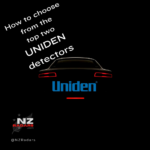Do NZ Police user radar or laser?
The answer is BOTH. New Zealand Police use both radar and laser to detect speeding vehicles.
Radar is a more common though being installed in police patrol cars, motorbikes, and fixed and mobile speed cameras.
Laser is more accurate, but it can only be used by officers who are trained in its use and is used from a stationary, parked vehicle.
Here are some of the differences between radar and laser speed detection:
- Radar: Radar uses radio waves to measure the speed of a vehicle. It is less accurate than laser, but it can be used in all weather conditions and is not affected by reflective surfaces.
- Laser: Laser uses a beam of light to measure the speed of a vehicle. It is more accurate than radar, but it can only be used in clear weather and is affected by reflective surfaces.
The New Zealand Police use a combination of radar and laser to detect speeding vehicles. This ensures that they are able to enforce speed limits effectively in all conditions.
Radar detectors are 100% legal in New Zealand, but they are not very effective against laser speed guns as laser gives a near instant result. Police will have your speed measured and locked half a dozen times in the moments it takes you to even get to the brake pedal.
It’s worth noting that even with the very best radar detctor in your car, you still need to be aware of your speed and surroundings. Remember, a cop following you at 110km doesn’t need a radar to know how fast you’re doing – they know how fast they had to go to keep up.
The only guaranteed way to beat speeding tickets in NZ is stil drive below the speed limit. That’s not always easy, even for the safest drivers. It could be argued that for some drivers, watching the speedo is more distracting than texting.






